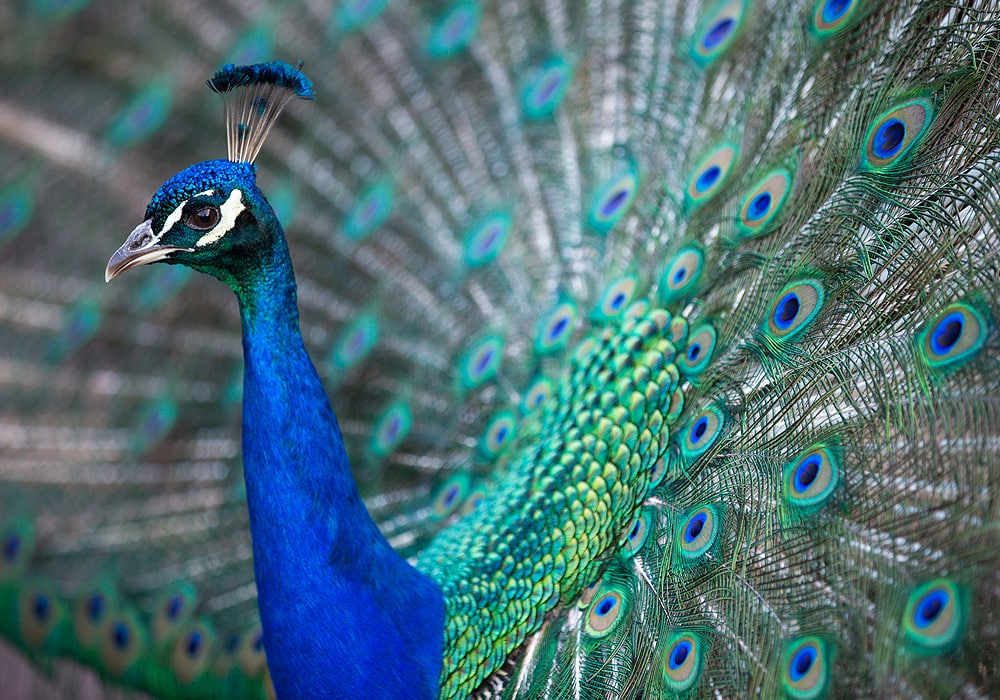Flamboyant, eye-catching, and unbelievably gorgeous, humans have treasured peacocks for centuries. These ornate and colorful birds symbolize opulence, luxury, and beauty. While peacocks originate from India, Sri Lanka, Myanmar, and limited parts of Africa, this bird was already being imported abroad four thousand years ago. Clearly, the relationship between humans and peacocks is ancient and meaningful.
Interested in the mythology of the peacock? Curious about the symbolic meaning of peacock dreams? Read on to discover a world of meaning associated with this exceptional bird!
Table of contents
Peacock Symbolism and Meaning
One of the first bits of information to note when discussing peacocks is their obvious sexual dimorphism. Sexual dimorphism refers to when males and females within a species have different physical appearances. Only adult male peacocks grow the impressive fan of tail feathers that makes the peacock famous. Peacocks, as a matter of fact, are so sexually dimorphic that it shapes the language we use to describe them.
Peacocks Represent Masculinity and Femininity
Technically, the word “peacock” is only used for the males of the species. Females are called “peahens,” chicks are sometimes called “peachicks,” and birds of this species are referred to in general as “peafowl.” The sexual dimorphism of peafowl means that peacocks represent both masculine and feminine energies and the strengths and weaknesses that accompany them. They embody the unique traits of both males and females and can also be seen as a symbol of dualism, synergy, and balance.
Luxury
Additionally, the showy tail feathers of the peacock symbolize glamor, confidence, and cockiness. Peacock motifs are frequently attached to ideas like luxury, vanity, and allure.
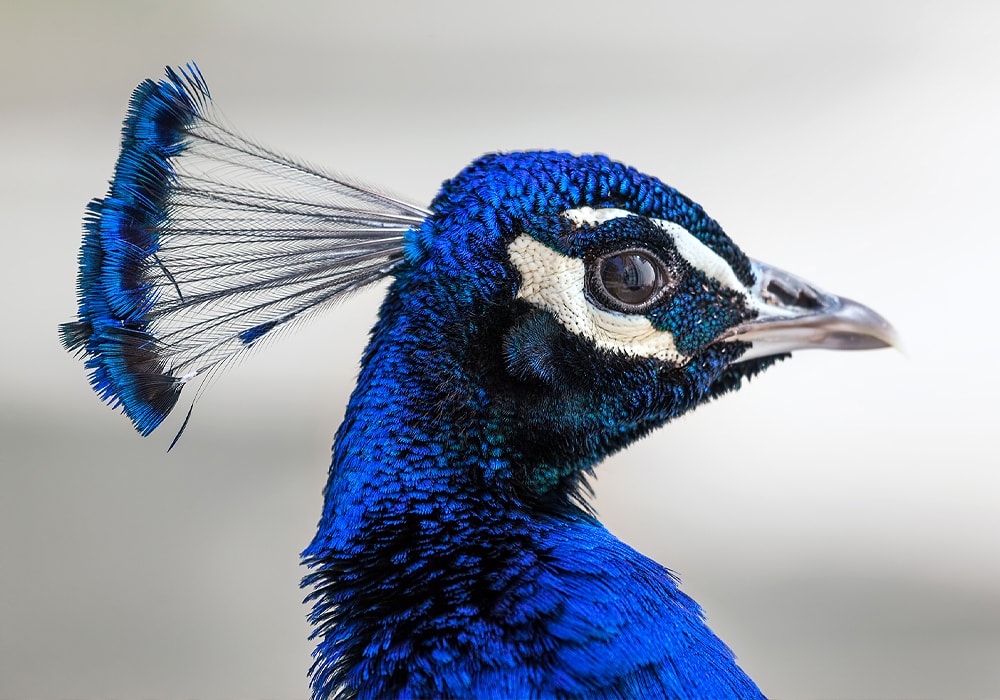
Peacocks and the Evil Eye
Some connect the symbolism of the peacock feather with the “evil eye.” The evil eye symbol, despite having such an intimidating name, is actually associated with protection from evil intentions and energies. The peacock’s tail feathers resembles this symbol and so they are often connected. One of the principal uses for the evil eye charm is to prevent curses or ill effects brought about by the envy of others.
So, the peacock and its feathers may represent protection, divination, and light magic. Some people do see the connection between the peacock’s feathers and the evil eye to spell misfortune. Keeping peacock feathers in the home is warned against by some superstitious types.
Peacocks Symbolize Fertility
Finally, peacocks shed their magnificent tail feathers each year at the end of the breeding season. Once the male’s tail feathers are completely shed, he is no longer fertile and cannot continue breeding. It is only when his feathers have grown back that the next breeding season can begin. Thus, the peacock may represent fertility, virility, energy, life cycles, growth, change, and metamorphosis.
Peacock Native American Symbolism
Peafowl are not native to the United States and could not be found in the Americas at all until long after Europeans came and settled into the land. From then on, peafowl have been gradually introduced into the United States as feral populations.
Most feral populations began as escaped or released domestic birds. Despite their ornamental feathers and somewhat delicate looks, peacocks are quite hardy and adapt quickly to new surroundings. In the United States, small populations of escaped or released pets have bloomed into huge populations of feral birds. These populations are considered harmful invasive species by many ecological agencies.
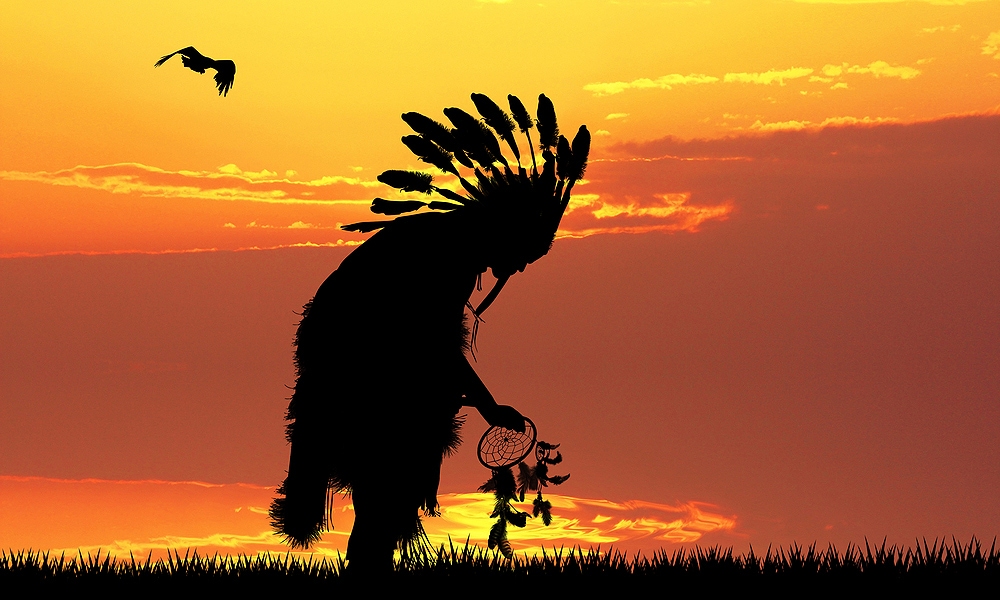
Attaching a Native American meaning to the peacock would be inauthentic. However one might look to these birds as a symbol of adaptability and stubbornness, thanks to their ability to carve out an existence in a foreign place.
Peacock Christianity Symbolism
Peacocks do not play a starring role in any particular Bible verses, however the peacock is present in quite a lot of biblical imagery. Early Christian art often pictured peacocks drinking from a vase or spring.
The peacock, in early Christian art, is said to represent eternal life. This is because of a Greek myth which suggested that peacock flesh would never rot. This may not be true, but it was enough to cement the peacock, in the minds of early Christian artists, as an animal who represents eternity. Artistic representations which depict a peacock drinking water represent the idea that faithful Christians drink from the water of eternity.

Furthermore, peacocks are so often associated with wealth and royalty that the peacock can also be connected with God as the “king of kings.” One of the only mentions of the peacock within the Bible occurs in 2 Chronicles. Referring to King Solomon, the verse states:
“For the king’s ships went to Tarshish with the servants of Huram: every three years once came the ships of Tarshish bringing gold, and silver, ivory, and apes, and peacocks.”
The peacock is used to demonstrate the wealth and resources at King Solomon’s disposal.
Peacock Celtic Symbolism
Celtic bird symbolism is firmly associated with supernatural forces. The Celtic Otherworld is often connected with birds, and many different types of birds are said to be capable of passing between the material world and that of the Otherworld.
With that said, peacocks are again not native to the regions in which Celtic cultures developed. Despite this, trade and domestication brought much of Europe into contact with these birds at quite an early date. Celtic cultures may not have had the same exposure to the peacock as, say, Indian cultures where the peacock is native, but the peacock is nevertheless influential.
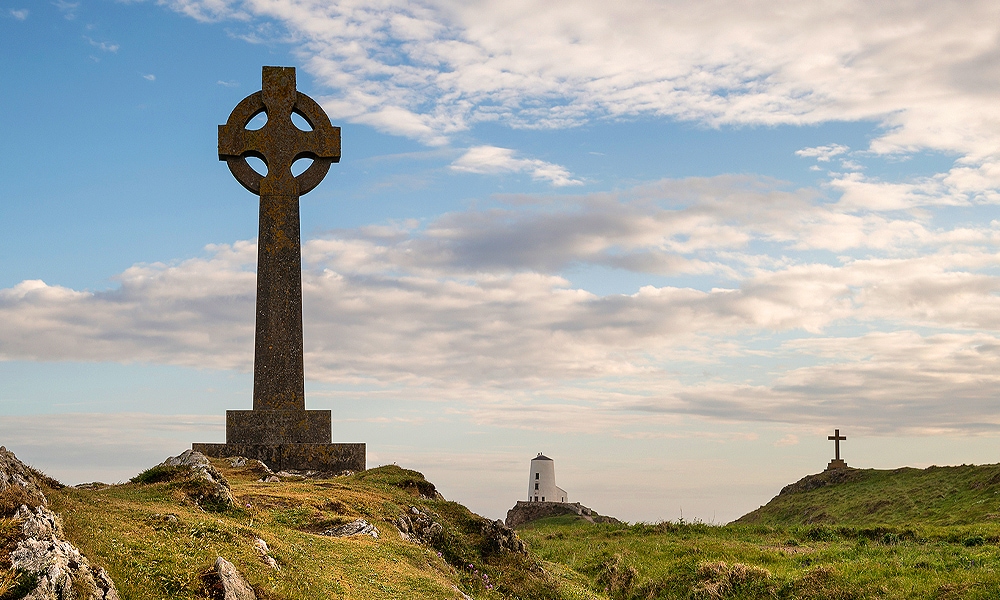
Many early Christian manuscripts were illuminated by Celtic monks. These manuscripts sometimes feature illustrations of peacocks with the same Christian peacock symbolism as previously discussed in the section on biblical peacock symbolism. In the Celtic world, too, the peacock is connected with eternity. The peacock’s ability to shed its tail feathers and grow them back as magnificent as ever is also used as an allegory for the resurrection of Jesus Christ.
Peacock in Dreams
Dreaming of the peacock is a special experience. Peacock dreams can be rich with imagery and very surreal, or they can be more subdued and mundane. The appearance of a peacock in your dreams can provide a wealth of insights.
Firstly, dreaming of a peacock may represent feeling that you are being watched. Peacock feathers look a lot like eyes. Dreaming of a peacock’s fan of feathers may mean that you feel lots of eyes on you which may come with self-consciousness or a sense of pressure.
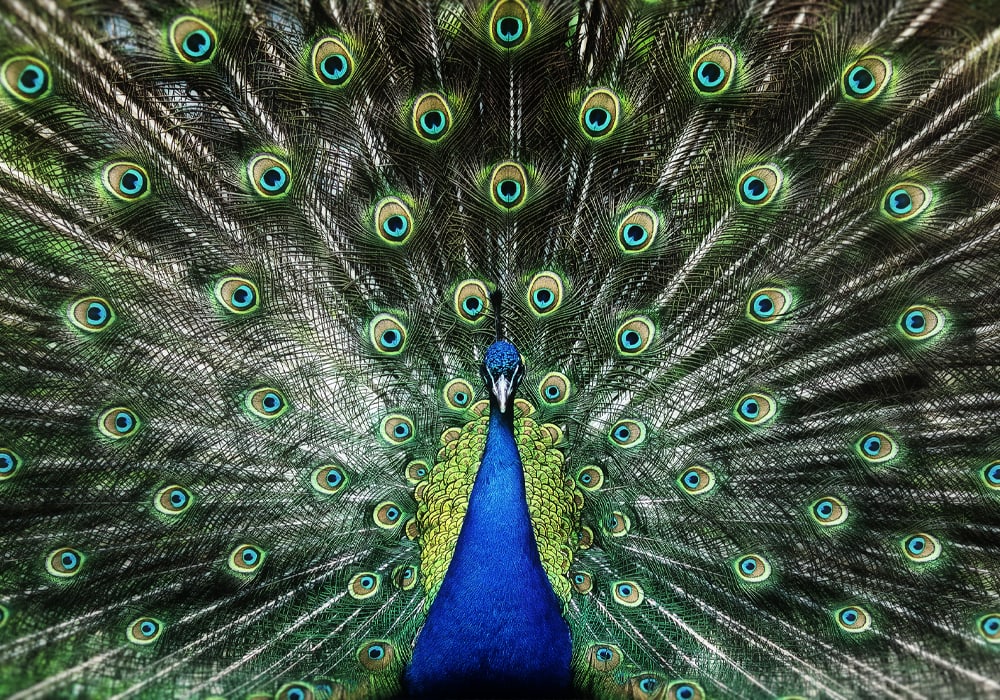
Peacock dreams may also represent a desire to make your fortune. Money can’t buy happiness, but it can absolutely buy lots of valuable opportunities to focus on the things that you enjoy. Peacock dreams indicate ambition and desire, but be careful not to forget what is really important.
Peacock Encounters and Omens
Encountering a peacock may be a sign to work on your confidence. The peacock’s famously glamorous strut is one of the things that makes peacocks special. Peacocks do not fear the envy or judgement of others. They celebrate their natural gifts without shame. A peacock encounter may be a sign to identify the things that are holding you back and confront them.
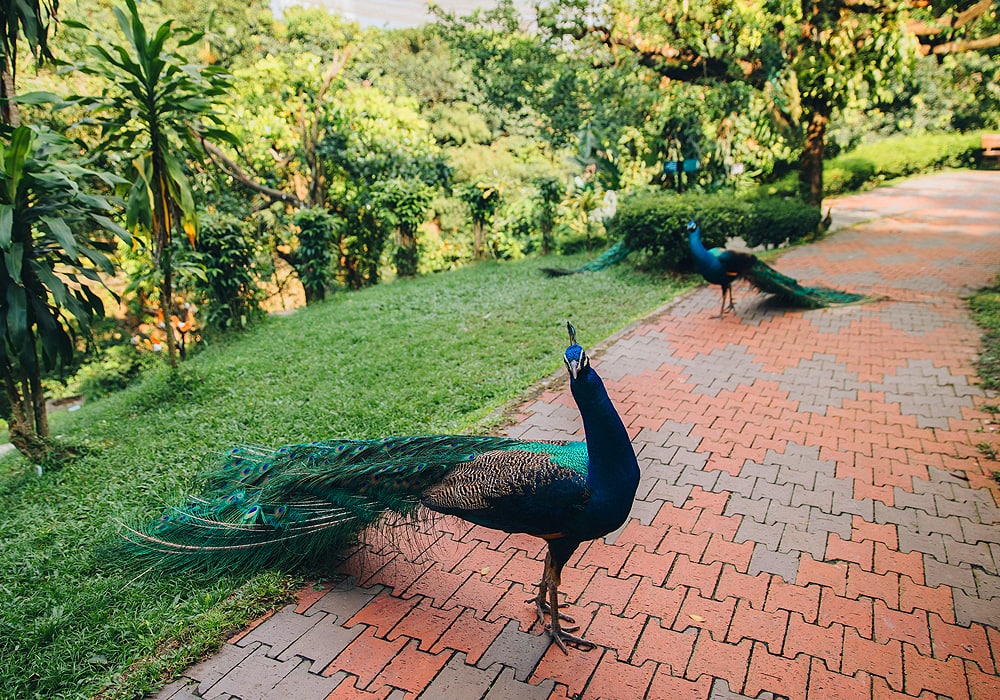
Encountering a peahen may be a reminder not to fixate on appearances. Peahens are just as valuable and beautiful as peacocks, even without that eye-catching fan of feathers. Never forget that your “feathers” don’t make you who you are. Only you can do that.
Peacock Mythology and Folklore
In Greek mythology, the peacock is associated with the goddess Hera. Hera is the queen of the Greek pantheon and the main consort of the chief god Zeus. Hera is associated with regality, fertility, marriage, and childbirth. According to Greek mythology, Hera was often jealous and vengeful on account of the many lovers that Zeus pursued.
One such lover, Io, was transformed into a calf by Zeus so that he could keep her close without Hera knowing. Hera suspected that Io was not what she seemed, though. So, she ordered her servant, a monster with hundreds of eyes called “Argus Panoptes” (literally many-eyed Argus) to guard the calf. Argus was sworn to never look away from Io and was a dutiful servant. To rescue Io, Zeus slew Argus. In honor of his loyal servitude, Hera immortalized his may-eyed face in the pattern of the peacock’s tail which she took as one of her symbols. Now, the peacock is a well-known symbol of Hera and her vengeful but regal nature.
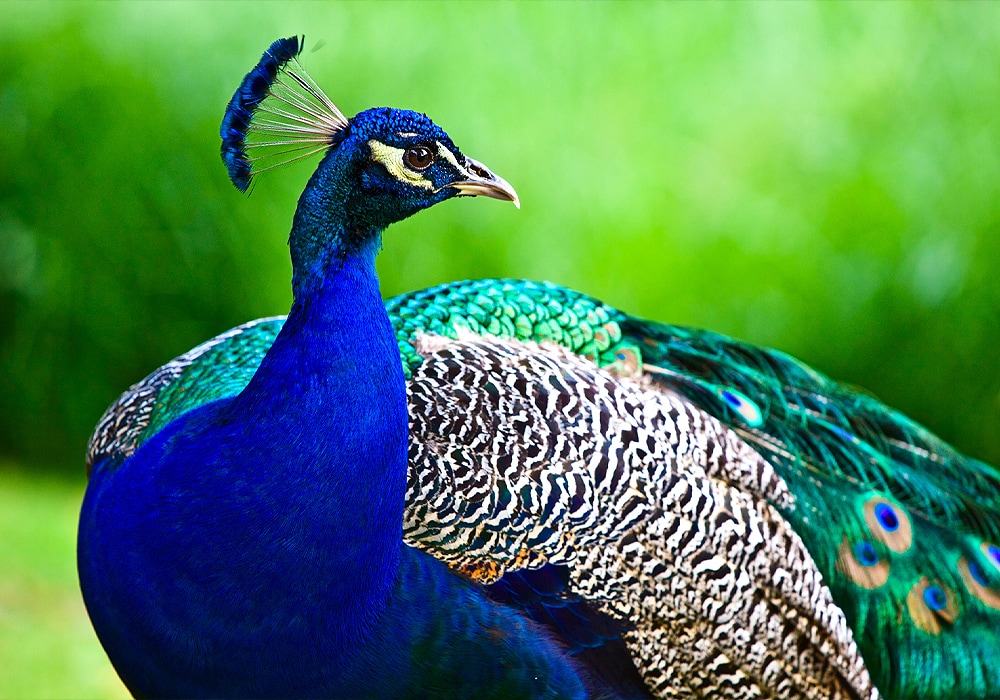
Peacocks are native to India and extremely cultural important there. The peacock is, as a matter of fact, the national bird of India. Featured in many Indian myths and folktales, one of the most important Indian cultural beliefs regarding the peacock is that this bird was made from the feathers of Garuda. Garuda is a mythical bird which is said to have been the vehicle of the god Vishnu.
Peacock Spirit Animal
If you possess the peacock as your spirit animal then you are most likely an assertive and confident person with a taste for the finer things in life. The peacock spirit animal is unapologetically unique and proud, but inside these people tend to be their own harshest critics.
The peacock spirit animal is prone to serious perfectionism. People with the peacock as their spirit animal expect great things from themselves and are often not content to rest on the laurels of their successes. The peacock spirit animal can have a really tough time facing failures and may need extra support in order to take in failures as growth opportunities.
The peacock spirit animal is not limited to men, however it does tend to gravitate towards a more masculine energy. People with the peacock as their spirit animal are competitive, assertive, and very vocal about their wants and needs.
If the peacock is your spirit animal then you may find that you crave attention and validation from others. This is natural to an extent, but it is important that you remain aware of your core values. Validating, loving, and accepting yourself is much more important than the praise of others. Instead of looking to others to praise your natural talents and achievements, try to re-center your focus on being a kind and generous person towards whom people will naturally gravitate.
Peacock Totem Animal
The peacock totem represents healing and protective energies. Although some superstitions attach misfortune to the “eye” shape of the peacock’s feather, this “evil eye” is commonly connected with protection from curses and ill intentions.
The peacock feather represents the protective forces associated with this “evil eye” charm. This means that those who possess the peacock totem are naturally in tune with energies and have a special talent for repelling negativity and banishing evil from their lives.
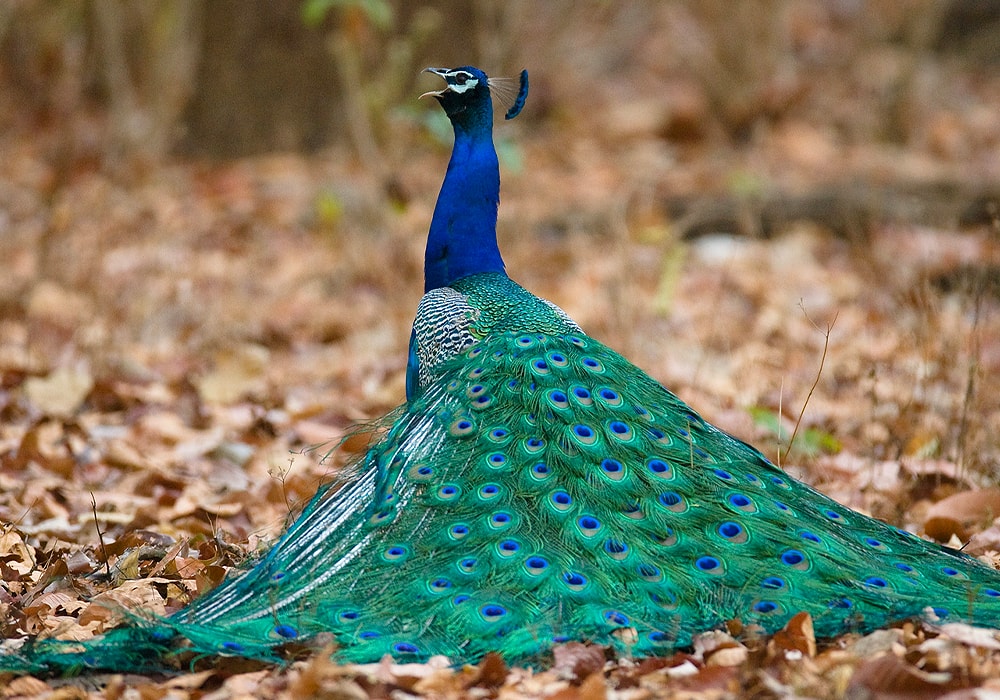
The peacock totem is associated with empathy and emotional intelligence. People with this totem are gentle and attentive when it comes to the emotions of others, but may need to take extra care to recognize and accept their own emotional states.
The peacock totem animal brings healing energy into relationships. Although people with the peacock totem can be high maintenance, their ability to rejuvenate others makes them ideal partners.
Peacock Power Animal
The peacock power animal is associated with charm. People with the peacock as their power animal have a natural allure that draws others to them. The peacock power animal exudes charisma and often possesses a wide circle of friends and admirers.
People who have the peacock as their power animal are the ultimate social butterflies. They may not be everyone’s best friend, but they tend to build deep relationships with lots of different people with relative ease.
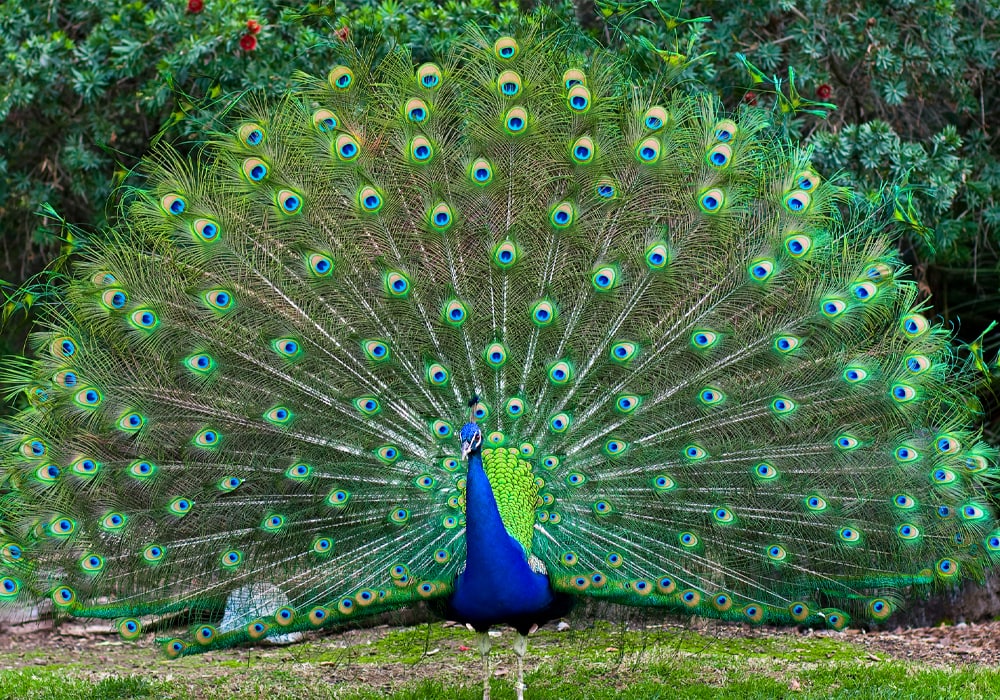
There’s no getting around it. Part of the peacock’s charm is its beautiful appearance. People who possess the power of the peacock tend to be flashy. Whether it’s eyes that catch the sunlight just right or a mouth full of dazzling pearly whites, the peacock power animal flaunts what it has and never fails to impress.
It is important that people with the peacock as their power animal make conscious efforts not to dwell too much on shallow physical traits. No matter how beautiful a person may be, an ugly personality makes for an ugly individual.
Peacock Tattoo Meaning
Peacock tattoos may be chosen as symbols of the peacock’s trademark beauty and flamboyance. Furthermore, tattoos featuring peacock feathers might represent protection from dark magic or negative energies. The peacock’s eye shaped feathers are often likened to the protective “evil eye” charm.
Peacock tattoos might represent the Christian imagery of the peacock as a symbol of eternity. This symbolism is somewhat outdated, but that hardly invalidates its meaning.
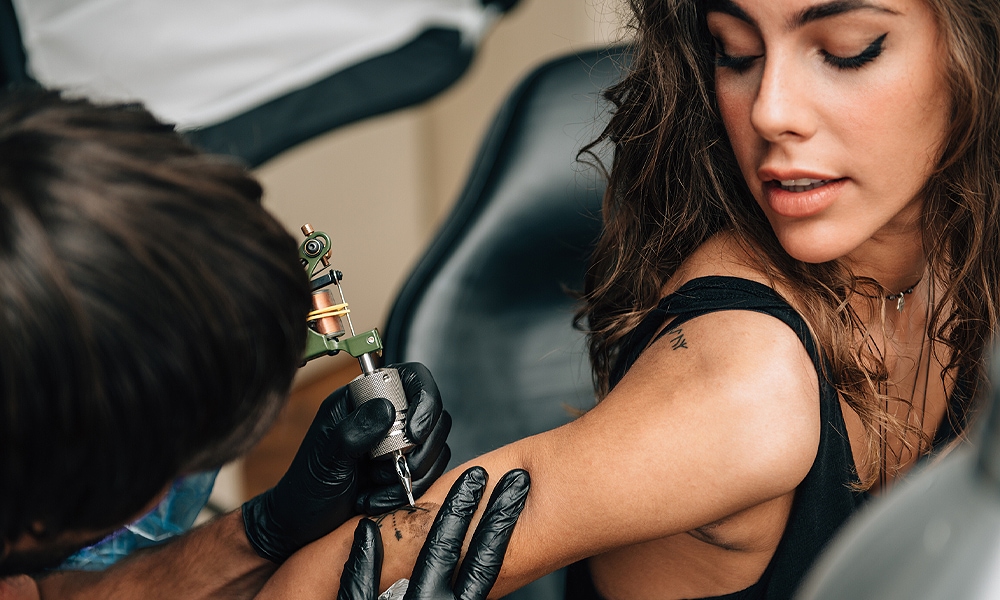
Peacock tattoos may also represent regality, royalty, or pride. Like the mighty Hera of Greek mythology, the peacock embodies majesty and elegance.
A peacock tattoo may also represent more masculine values such as competition and virility.
You might also choose a peacock tattoo because of this bird’s significance in India. The peacock tattoo may be a symbol of national pride for an Indian person, or a symbol of religious significance for a practitioner of Hinduism.
More possible meanings for a peacock tattoo include:
- Ambition
- Perfection
- Dualism
- Synthesis
- Judgment
- Growth
- Metamorphosis
- Rebirth
- Purity
Conclusion
It’s clear just by looking at the peacock that this splendid animal is both inspirational and significant. Although the geographical areas in which peacocks are natively found are limited, this stunning bird has become a world traveler, making its mark on every culture that meets it. From the annals of Ancient Greek mythology to modern U.S. suburbs, the peacock certainly knows how to make an entrance!
Related

